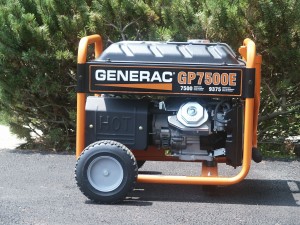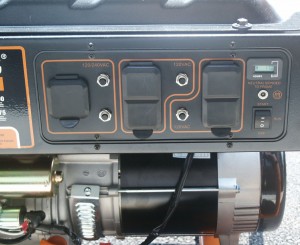There are two basic options for providing backup power to a residential building. The first is using a portable generator. These units are used to power individually connected cord-and-plug appliances, such as coffee-makers, refrigerators, and televisions. To eliminate the inconvenience and potential danger of running extension cords, a portable generator is best used in combination with a manual transfer switch. The transfer switch is permanently wired into the home’s electrical panel, while the generator plugs into a remote-mounted 240-volt receptacle that is hard-wired to the transfer switch. When a power outage occurs and the portable generator has been connected to the remote receptacle, power becomes available at the transfer switch via the generator. Individual rocker switches on the transfer unit then allow users to direct power to pre-selected circuits as desired.
Unlike a portable generator, a standby generator is permanently mounted outside the home and provides backup power automatically when utility power is lost. Depending on unit size, a standby generator can automatically backup specific pre-selected circuits, or restore power to the entire home. When a power outage occurs, an automatic transfer switch detects the absence of utility power. After a brief time delay, the generator starts automatically and begins delivering power to the home via the automatic transfer switch.
Tip!
When buying a portable generator, select a unit with a minimum of 4500 running watts. This will provide enough capacity to operate the home’s most critical circuits, such as the refrigerator, one or two general-purpose circuits for lights and power, and the water pump (for homes with a well). Running watts refers to the amount of power the generator can deliver under normal operating conditions. Never size a generator based on its surge watts rating, which is a significantly higher number. This value merely indicates the amount of power the generator can deliver for brief periods (several seconds) to compensate for the starting current of motorized appliances.

This portable generator clearly shows both the running and starting watts ratings. With an advertised running watts of 7500, this unit can easily handle a combination of critical load circuits up to 30 amps.

Most portable generators 4500 watts or more include a pair of 120-volt receptacles along with a single 120/240-volt receptacle. Some portable units also come with electric start, which eliminates the difficulty of starting the machine by hand.


